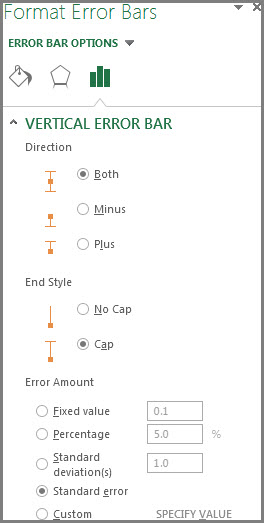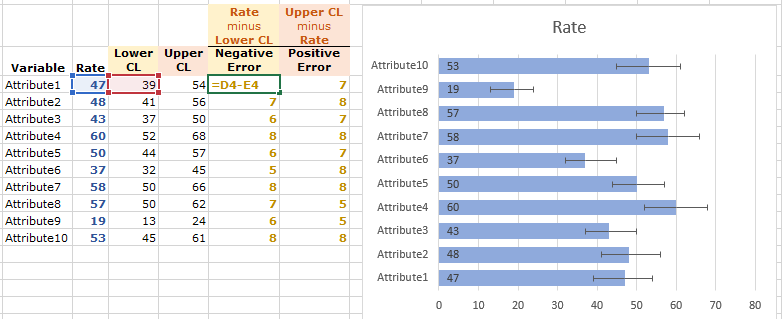
These could be measurement variables, or they could be nominal variables summarized as percentages.

Use a scatter graph (also known as an \(X-Y\) graph) for graphing data sets consisting of pairs of numbers. But by far the most common graphs in scientific publications are scatter graphs and bar graphs, so that's all that I'll talk about here. There are many kinds of graphs-bubble graphs, pie graphs, doughnut graphs, radar graphs-and each may be the best for some kinds of data. And don't use both red and green bars or symbols on the same graph from \(5\%\) to \(10\%\) of the men in your audience (and less than \(1\%\) of the women) have red-green colorblindness and can't distinguish red from green. But don't use red type on a blue background (or vice-versa), as the eye has a hard time focusing on both colors at once and it creates a distracting \(3-D\) effect. It's pretty, and it makes it easier to distinguish different categories of bars or symbols.

Clearly label both axes of your graph, including measurement units if appropriate. all distract from the message of your graph. Grid lines, background patterns, \(3-D\) effects, unnecessary legends, excessive tick marks, etc.

Don't clutter up your graph with unnecessary junk.


 0 kommentar(er)
0 kommentar(er)
